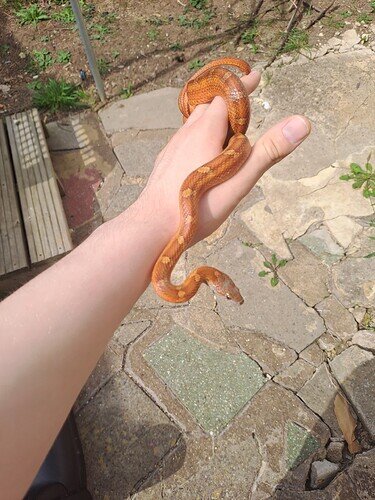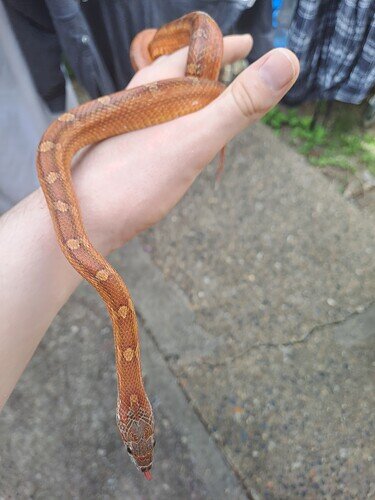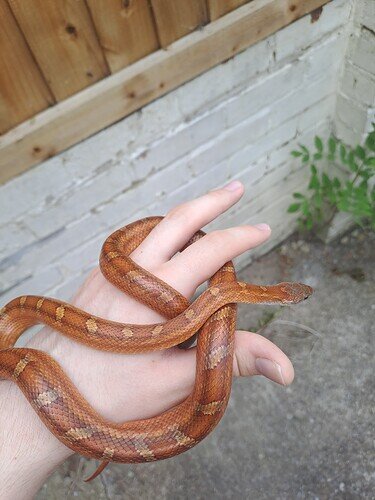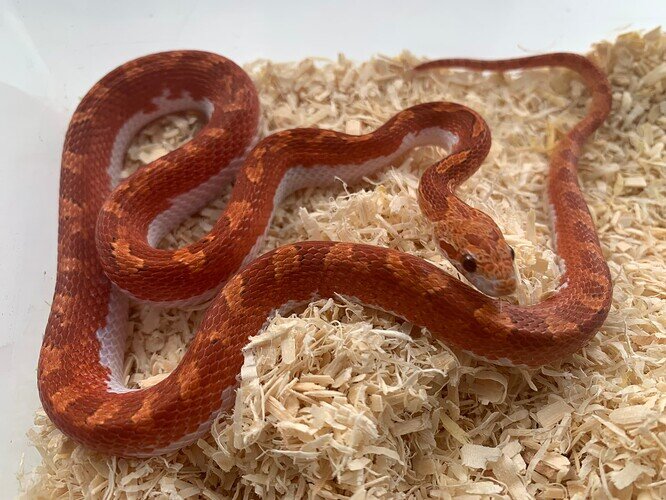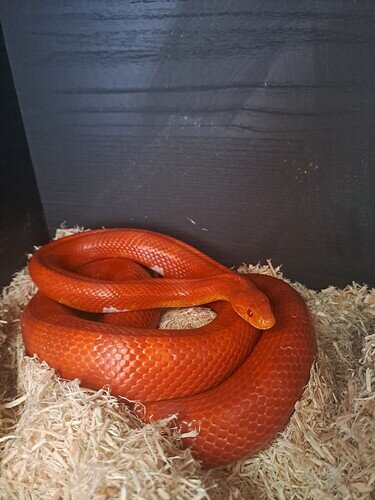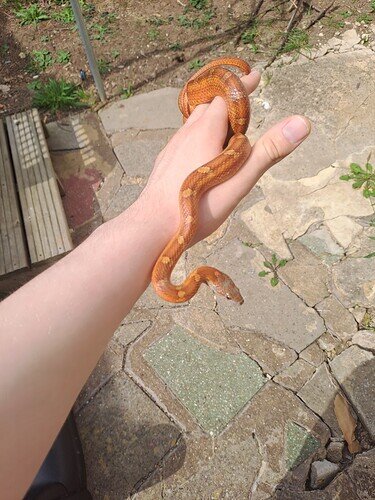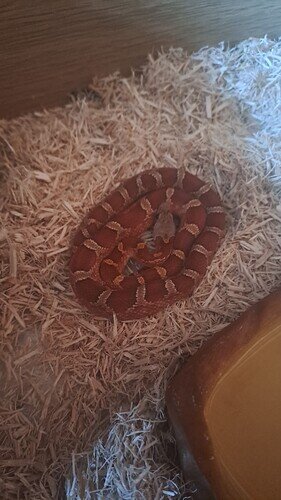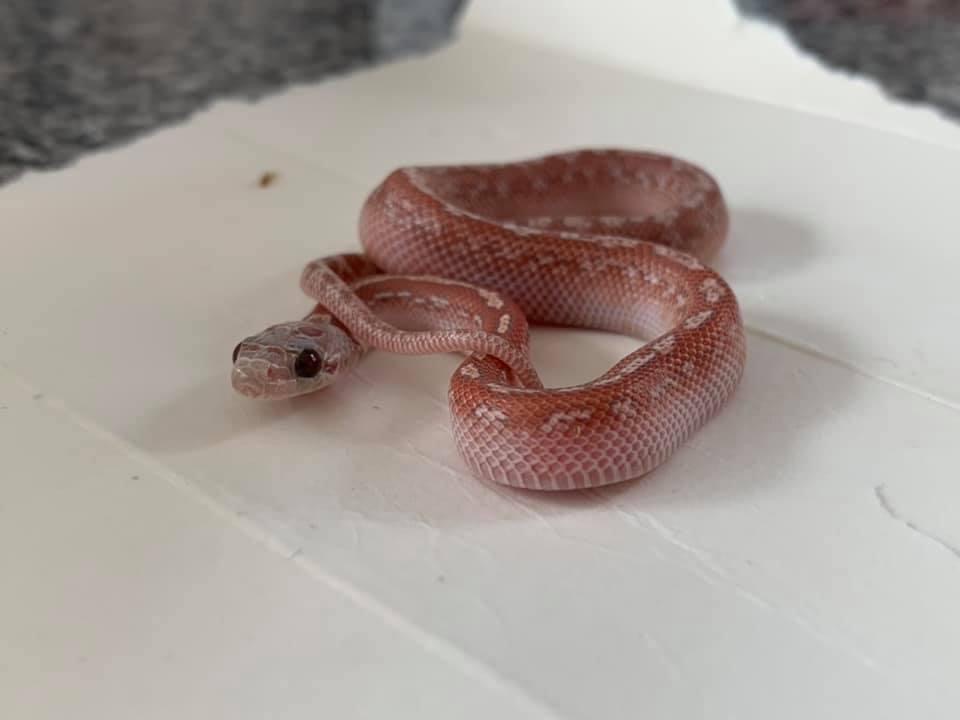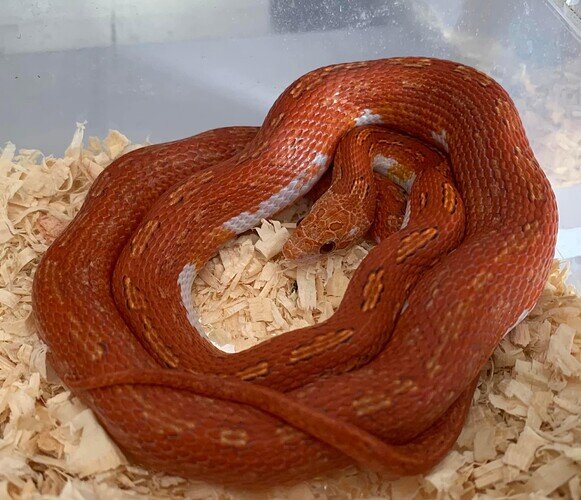Is the inheritance for the pied sided gene still unknown? Im planning on breeding 2 pied corns next year and read that there are 2 seperate lines? I also read that a pied to pied parent can still produce snakes that dont show pied? Would they just be a poor expression of the gene or not have it completely? Are both lines seperate in inheritance and you need the same line to produce more? Thanks in advance
There are two lines of pied, but at this point, the lines have been crossed into each other so much that most pied corns likely have both lines in them. A non-visually pied corn from two pied parents is still considered pied, and as far as I’m aware, could still produce its own pied offspring. Usually you can still tell it’s from pied lines because the diffusion will be excellent.
Although it’s not super clear cut, usually the babies will have a similar amount of pied as their parents.
Would this mean that its a rececive gene as most people believe then? Ive heard of some people breeding pieds and getting a range of expressions.
Yeah, you can get a range of expressions, but usually the range will be similar to what the parents’ levels of expression are.
I’ve only ever owned one pied corn and I haven’t bred them, so I can’t really comment on whether it acts like a recessive gene.
Ok well thanks for the help anyway!
Are you planning a pied to pied breeding?
Yeah im planning on doing that for next breeding season. Currently I have 2 pied females and 1 pied male who i will have soon im just waiting for him to be shipped
Oh, very cool. You’ll have to post pictures after you get him.
I sure will! I should be getting him next Monday.
I think it is best to plan breeding as if Pied is simple recessive (even if it doesn’t always appear that way).
Amount of pied on babies is not dependant on adults showing but certainly helps (as do all line-breeding efforts). Having some extreme Pied adults helps but extreme Pied animals can be produced from low to medium white adults. I feel, more than most mutations, that Pied in corns is a passion project and those that mainly work with Pied regularly produce the best examples. The addition of red-enhancing
genes make a huge difference, as does the quality of the diffusion, to how adults eventually turn out.
I wouldn’t worry which line of Pied you have as it is not all that important at this stage and you will struggle to get solid answers from honest breeders regarding this. They are open enough to fairly represent their stock and this is most commonly mixed in origin.
These are the two im going to pair.
This is the female shes a fire pied het anery and pos het hypo. Shes super red with a nic amount of white.
This is the male hes a bloodred low pied het hypo and anery
Pied is definitely going to be my main focus in breeding so do you think they would produce good quality offspring?
I also have this year old bloodred pied pos het hypo and scaleless but she wont be ready to breed for another few years. Most of her white is around her neck so you cant see much in this photo.
The Fire Pied is a cracking example! I think they may well make some lovely Pieds…
Awesome! How red should i expect them to be? It would also be nice if she proved out the be hypo becuase then i could hatch out a hypo granite pied!
The male is not the reddest, the grey head and orange colour at that size are not perfect. BUT…this female is a good start. As I said, line-bred Pieds are the best as the colour and diffusion can be improved each generation. My OG animals are not the very best examples but their offspring are redder and more high pied each year. I am three generations into my Pied stuff and the animals improve each year. Start your project, hold back only the very best and keep passionate and good things will come from it…
If she does prove out for hypo how would that affect the look? And would i be able to breed them back to the mum? I purchased the male for the hets aswell since id also like to produce some avalanches in the future.
Edit: the male also doesnt have much white. He has a small patch on his side and some on his neck. His tails tip is also completely white. Hopefully after a few generations they will be nice quality!
The animal I posted earlier is a Hypo. Much cleaner saddles and deeper reds I find as they age. Not all Hypos age the same and red-factor-type genes are lurking everywhere.
I find it best to keep each animal with some potential for a year or so if I can and assess them as they grow. They change so much in that first year. I try to keep baby photos of the holdbacks so I will hopefully be able to better assess babies and hold less animals back…
That makes a lot of sense. Also would I be able to pair the babies back to the mum without risking deformities and kinks?
You can do that pairing and most people do at some point. I know line breeding is somewhat frowned upon here but it is the only way any unique project makes any ground. That said, you must keep good records and try to buy in a new male periodically. I will try to hold back females mainly to grow my stable and invest in top end males to introduce new blood.
